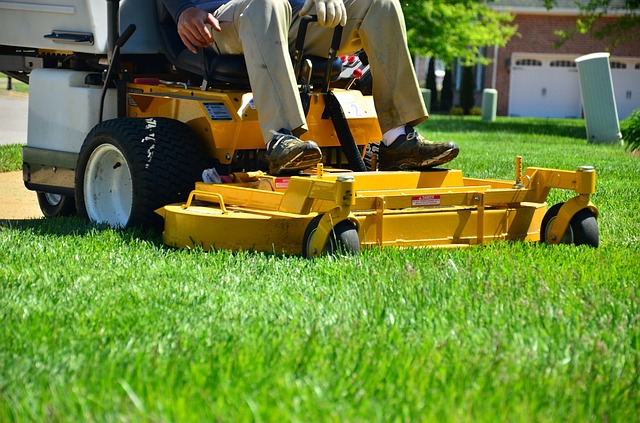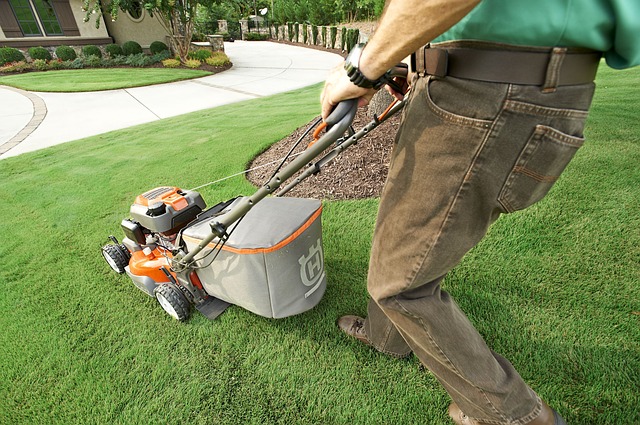
What do you think is the easiest way to improve the quality of your lawn? If your answer is aerating the lawn, regular and proper watering, or fertilizing it, you’re in good company. These are among the first things people think of doing to improve their lawn’s health. Very few people ever imagine that by simply mowing the lawn regularly, they can maintain its quality.
In the minds of most homeowners and tenants, the only reason for mowing a home’s lawn is to make it attractive, explains T-Square properties. Mowing the lawn keeps the grass nice and even. This, in turn, enhances the appearance of the home. Well-manicured lawns promote the overall appeal of a neighborhood. But beyond the home’s aesthetics, there are other reasons for mowing the lawn.
Benefits of proper lawn mowing
Other important but lesser-known benefits of mowing the lawn are:
Even and consistent growth
Cutting the grass regularly facilitates even distribution of resources across the lawn, which results in consistent growth. This is because slicing the grass down to a uniform level helps each plant gain the same level of access to water and sunlight.
With even distribution and absorption of nutrients comes consistency in the way the grass grows. This prevents the lawn from having patches of fading or weak, uneven growth. A patchy lawn is an eyesore and this problem is easily solved by regular mowing rather than by watering and fertilizing.
Stronger grass
Every lawn starts out with a mixture of weak and strong shoots. Over time, the health of the lawn will be determined by the number of weak nodes versus strong shoots. Whatever removes the weaker grasses improves the health of the lawn. Mowing the lawn regularly allows only the fittest grasses in the yard to survive.

When the grass is cut, the healthiest shoots recover ahead of the weaker ones. And over time, as the grass is cut over and over, this process is repeated until the weakest grasses are eventually removed. Mowing the lawn reinforces and improves healthy growth over time.
Lawn resilience
When a lawn is mown, the plants in it experience some level of trauma. Although the process of cutting down the plant harms it in the short-term, eventually this shock can be good for the plant. This is because the grass becomes more resilient and can bounce back from the trauma quicker.
The resilience of a regularly-mown lawn reveals itself in how the lawn handles negative events like bad weather, disease and pests. Contrary to what might be expected, grass which has not experienced the trauma of being cut is weaker than grass that is mowed regularly.
Nourishing mulch
Cutting the lawn provides it with nourishing mulch which returns nutrients to the soil. Timing is critical to this process as shorter blades of grass are more nourishing than longer ones. When the lawn is cut before it has the chance to grow long, it ensures that more nutrients are recycled back into the soil.
By mowing the lawn on a regular schedule and leaving the cuttings on the lawn, the need to fertilize it is greatly-reduced. This lowers the overall cost and effort of maintaining the lawn. It also protects the environment.
Eliminate pests and disease

An overgrown lawn provides hiding places for pests and is a good breeding ground for disease. Mowing the grass not only eliminates tall grass that is a perfect habitat for bugs and rodents, but it also removes weeds that breed disease.
A shorter lawn will have more sunlight and oxygen reaching its shoots and the soil beneath. Since most pests and rodents prefer hiding places which are not exposed to light, the lawn is less likely to harbor vermin. This reduces the need to use harmful pesticides on the lawn.
How to mow properly
What is the best way to mow your lawn to achieve the above results? Are there specific things you should know and do when mowing the lawn?
Proper mowing height
For the best results, the grass should not be cut below 2-3 inches high. Keeping the grass at 3 inches is better. The height of the grass matters depending on the root’s depth, the space for the weed to grow, and the resilience of the lawn.
Mowing frequency
This depends on the season of the year and the rate of grass growth. During wet weather, cut more than once a week and in dry weather, cut once a week. But never remove more than one-third of the grass leaf in one cutting.
Do not remove clippings
If a lawn is mown regularly, there will be no need to collect clippings, as grass blades will not be long enough to constitute an eyesore. The clippings will filter back down into the lawn and decompose to nourish it. Use a quality mower with a sharp blade. It will make cutting the lawn easier and prevent unnecessary damage to the grass. Blunt blades hurt the plants by ripping them out of the soil.

